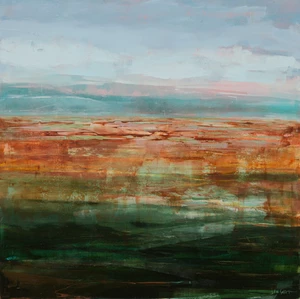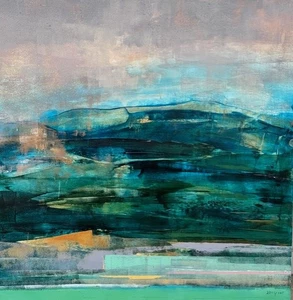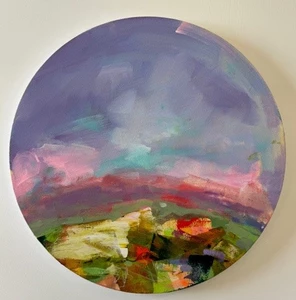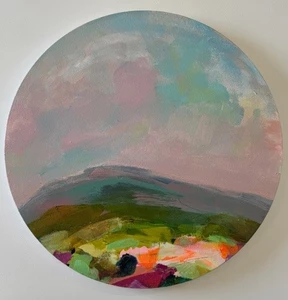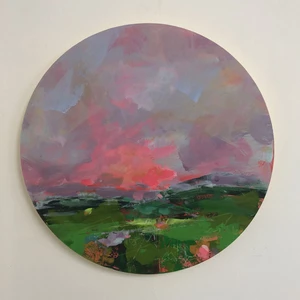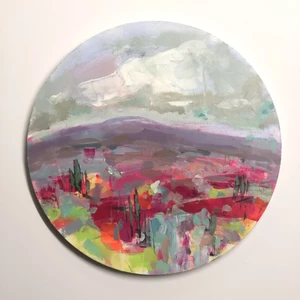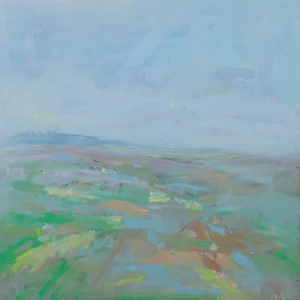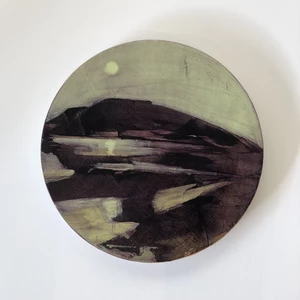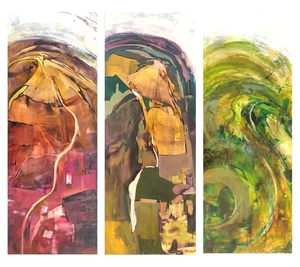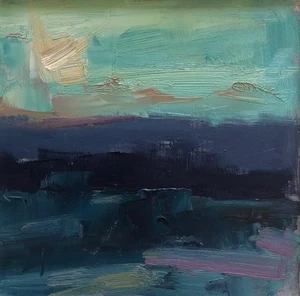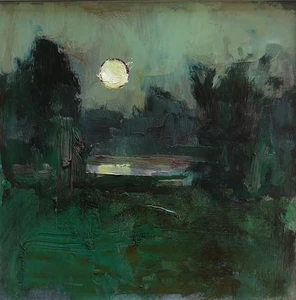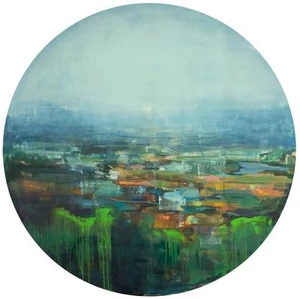Jennie De Groot
Jennie's paintings are a place where reality, imagination and memory all have equal tenancy. She works from a studio in semi-rural Ngahinapouri, Waikato.
Whilst she is particularly moved and influenced by the natural landscape, Jennie seeks a personal interpretation of it rather than a replication of it. By painting on location, her relationship with nature is strengthened and she gains deeper insights. These field studies, painted en plein air, are an emotional response to the landscape. From these studies, Jennie develops larger studio works, which go beyond the spontaneity of the plein air pieces to elaborate on those deeper connections. Of greatest concern is capturing the spirit of the landscape.
I am interested in the tension between suggestion and representation. I focus on being inventive with my application of paint and experimenting with my material. The painting process has to be fresh and interesting for my own sanity. I use oils and let paint drip, build up layers, scrape back, flick it around and use my tools to create marks that remain in the finished painting.
Jennie De Groot was born in England (1968) but raised in Africa. Her peaceful and contemplative landscapes capture the essence of the landscape without claiming any geographical co-ordinates. Journey is a recurring theme in Jennie’s painting process and finished works. Connection and isolation are themes that she regularly addresses.
Through her experimental use of un-painterly tools and traditional paint, she creates both landscape of great tranquility and portraits of disturbing disquiet. Experimentation with mediums and tools is central to her practice and continued exploration of subject matter.
A Bachelor of Arts in Archaeology from the University Of Cape Town was her introduction to the narrative within the landscape. After an initial life in Africa, a second life in New Zealand has seen her place emphasis on landscape painting as a means to establishing roots and creating meaningful connection with Aotearoa.
She exhibits annually and has work in the collection of the University of Waikato and the Te Awamutu Museum. Her works are held in private collections worldwide.

